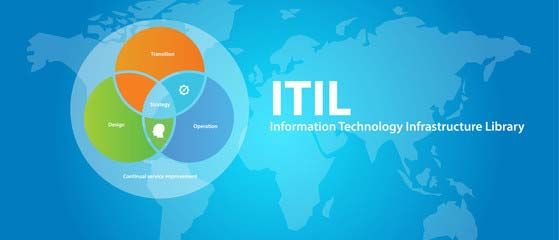
Everything You Need to Know About Service Level Management In ITIL
Thanks for all your feedback and comments regarding my blog post on continual service improvement. Also thanks to our Content Expert who is always helpful and supportive. I hope you will enjoy reading this blog post as well. In this blog post, I am going to discuss an important process of ITIL: Service Level Management (SLM).
What Is Service Level Management?
This is one of the 26 processes discussed in ITIL Foundation certification training. SLM belongs to the Service Design stage of the IT service lifecycle. It makes sure that all IT services, current or planned, are delivered as per agreed targets or expectations. In simple words, service level management maps customer expectations with the service provider’s offerings and points out the gaps and areas that need improvement.
There are three types of documents/agreements which fall under service level management:
- - Service Level Agreement (SLA)
- - Operational Level Agreement (OLA)
- - Underpinning Contract (UC)
The usage of above agreements/contracts vary depending on application scenarios.
What Is A Service Level Agreement?
An SLA is used/signed between a customer and IT service provider, provided that both are not part of the same organization. The agreement is in writing and has to be signed by both parties. It provides details about the expectations of the customer and deliverables of the service provider.
How Does An SLA Work?
Suppose you are buying internet service from an internet service provider. In this case, an SLA may provide details about your (customer) expectations such as the bandwidth and the quality of service and what your service provider will get in return for the services (payment details). It may also address the acceptable/unacceptable outage durations and their handling/escalation procedures. Depending upon the customer and their expectations, based on the type and nature of business/work, there may be severe penalties to the service provider if they fail to deliver un-interrupted service over a duration mentioned in the agreement.
Is It A Legally Binding Document?
There are some professionals in the industry who consider the SLA as a legal document but that is not true. The SLA is supposed to be written in a format which is clearly understandable by both parties, the customer and the service provider, so you can’t really use legal terms and language in it. However, an SLA can be presented in a court of law if there are circumstances which take either one or both parties to that extreme.
In my opinion, the purpose of the SLA is to learn and identify IT service related issues and shortcomings so that these can be addressed and more value can be added by the service provider in their offered service(s). SLAs are based on service level requirements (SLRs) which are customer requirements or the expected outcomes the customer wants to achieve regarding one or more aspects of the IT service being provided.
What Is An Operational Level Agreement?
The OLA is similar to the SLA; however, unlike the SLA, both the customer and the service provider belong to the same organization. So, it is an intra-organizational agreement which is usually not taken as seriously as an SLA. You may not find it to be as detailed or as granular as an SLA. I can’t think of, and have never heard of, a situation where an OLA has been brought to court. This may be because both parties belong to the same organization, so any issues and conflicts that arise between them are solved within the organization. An example of an OLA could be a printing service provided to a business unit within the same organization.
What Is An Underpinning Contract?
The third document type in service level management is the UC. It is a contract between an IT service provider and their third-party supplier which enable the service provider to deliver its services to their customers.
Let’s suppose a company provides internet services to its customers. However, in order to provide these services and to fulfill their customers’ varying expectations, they need to have access to an inventory of networking devices and software. Without these supplies delivered to this service provider, it is not possible for this service provider to deliver the services they have committed to their customers and/or meet their quality/service expectations. In this scenario, there needs to be a written contract between the service provider and their supplier to make sure that the supplier delivers the required inventory based on demand indicators or agreed frequency of delivery, and the service provider gets the required goods/tools/supplies on time and as per expected timelines.
What Is The Purpose Of Service Level Management?
The purpose of SLM is to monitor, define, document, measure, report and review the scope and outcome of IT services, and if possible, apply corrective measures to improve the deliverables. It is part of business relationship management in which the service provider wants to facilitate their customers by understanding their expectations, nature of business, environment, target markets, customers, and strategies.
How Do We Make Sure Both Parties Are Living Up To Their End Of The Bargain?
To make sure what the customer is receiving is in compliance with the agreed targets between the two parties, there is a service reporting phase in SLM. In this phase, an SLA Monitoring Chart is being maintained regarding day to day service quality, outages, and complaints.
This chart is brought up in regular meetings between the customer and the service provider. These meetings are called service review meetings and are usually scheduled once a month. The purpose of these service review meetings is to go through the SLA monitoring chart and identify service related issues, service level breaches, and service improvement possibilities.
Service level management is technically a starting point for the Service Improvement Plan (SIP). The SIP can be enforced by a variety of techniques/methods including user training, proper documentation, and testing of all systems. In summary, the sole purpose of the SLM process is to make sure that all IT services are delivered as per customer expectations which have been agreed upon and documented by both parties.
I am planning to write my next blog post on information security. I hope you will continue to read my blog posts and won’t hesitate to share your response/feedback with me. Please do visit our community portal for discussions and resources on all things tech. See you next time.

